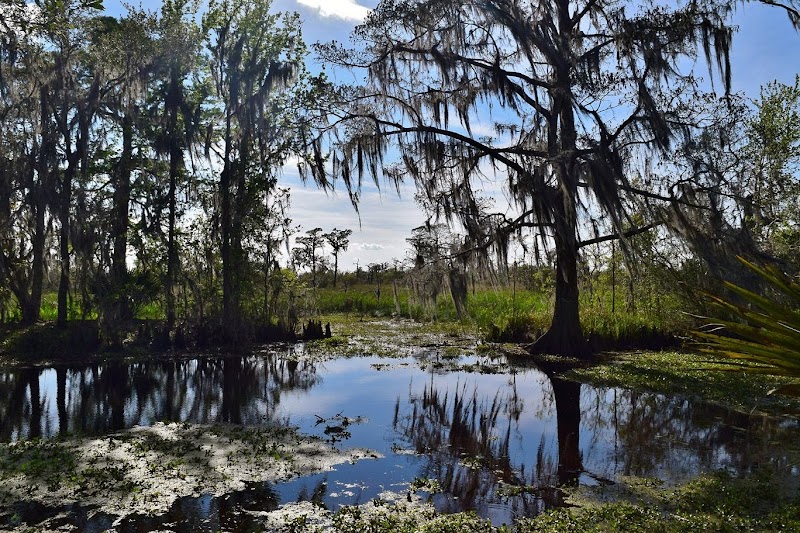
Dive Into the Luling Water Festival: Louisiana’s Splash of Tradition and Adventure
The Luling Water Festival in Louisiana offers an engaging weekend of river races, fishing contests, and lively community events along the Sabine River. Ideal for water enthusiasts and adventure seekers, it balances thrilling activities with local culture in a vibrant waterfront setting.
Stay Hydrated During Summer Heat
Louisiana summers push temperatures high; bring plenty of water and drink regularly to avoid dehydration during outdoor events.
Wear Water-Ready Footwear
Expect splashes and wet surfaces near the riverfront—waterproof or quick-drying shoes ensure comfort and safety on slick docks and beaches.
Arrive Early for Cooler Mornings
Morning hours are less crowded and cooler, making them ideal for fishing contests and peaceful paddling before the festival buzz intensifies.
Respect River Currents
The Sabine River flows with unpredictable strength—orient yourself before entering the water and never underestimate the current’s push and pull.
Dive Into the Luling Water Festival: Louisiana’s Splash of Tradition and Adventure
Every year in Luling, Louisiana, the Water Festival bursts into life—a spirited celebration where the town’s waterways take center stage, daring locals and visitors alike to join in its flow. Set against the backdrop of the Sabine River, this festival transforms the riverfront into a playground of excitement, with boat races, fishing contests, and water-themed events that pulse with community energy. The festival’s pace matches the lively current: fast enough to spark adrenaline, yet relaxed enough to soak in the local culture.
Luling, a historic railroad town turned water enthusiast’s hub, offers more than just festivities—it’s a practical launchpad for those who admire water’s compelling power. The festival typically runs over a weekend in early summer, when Louisiana’s warm days coax visitors outdoors. Come prepared to engage: whether it’s paddling a kayak down the Sabine’s twisting path or joining a family-friendly fishing derby, the festival keeps you moving.
While the headline acts like the boat races steal attention, don’t overlook the local vendors and food stalls lining the riverwalk. Here, Cajun flavors meet down-home barbecue, fueling your adventure with hearty purpose. The festival also highlights the river’s gritty history, from its role in local trade to its status as a community gathering place.
Plan your visit with timing in mind: mornings bring cooler air and calm water, perfect for early fishing or serene paddle outings. Afternoon heats call for hydration and shaded breaks, while evenings cool with live music and riverfront lights reflecting on the water’s surface—an ideal photo moment capturing the festival’s spirited heart.
Footwear should be practical—think waterproof or quick-dry shoes—as many events involve water contact. Hydrate often; Louisiana’s heat can push even the most eager participant off balance. Lastly, respect the river’s force. The Sabine may look inviting, but currents shift and pull with a mind of their own, pushing you to engage attentively and safely.
For those seeking adventure with a practical edge, Luling Water Festival blends the thrill of waterborne competition with community warmth. It’s an active, sensory experience where nature takes shape as a playful yet potent presence, inviting you to swim along its current or simply watch from the banks and catch the festival’s vibrant pulse.
Nearby Trips
All Adventures
Boat Charters
Water Activities
Adventures near Luling, Louisiana
Discover the unique and memorable adventures that make Luling, Louisiana special.
Frequently Asked Questions
When is the Luling Water Festival typically held?
The festival usually takes place in early summer, often in June, capitalizing on warm weather and longer days ideal for water activities.
Are there activities suitable for families and children?
Yes, the festival offers family-friendly events like fishing derbies and boat parades designed for all ages, along with food vendors and shaded rest areas.
Is swimming allowed in the Sabine River during the festival?
Swimming is generally discouraged due to varying current strengths and safety concerns, but supervised watercraft activities like kayaking and paddleboarding are popular.
What local wildlife might visitors encounter?
Visitors often spot great blue herons, river otters, and turtles along the Sabine River banks, especially in quieter parts outside peak festival crowd areas.
Are there any historical sites connected to the festival?
Luling's railroad heritage and river trade history are celebrated during the festival with exhibits and storytelling, linking the waterway’s past to its present cultural significance.
How accessible is the festival for people with mobility challenges?
While many festival areas are accessible with paved walkways along the riverfront, some water-based activities may have limited accessibility; contacting event organizers ahead of visit is recommended.
Recommended Gear
Waterproof Footwear
Protects feet during water activities and handles wet riverfront surfaces safely.
Sun Protection (hat, sunscreen)
Shields skin from strong Louisiana sun during midday outdoor festival events.
Reusable Water Bottle
Ensures hydration throughout the festival and outdoor activities.
Light Rain Jacket
Prepares you for sudden spring showers without weighing you down.
Local Insights
Hidden Gems
- "Old Luling railroad trestle viewpoint offers a quiet, off-the-beaten-path perspective of the river action."
- "Private fishing piers upstream provide secluded spots away from festival crowds."
Wildlife
- "Watch for migratory birds like the Mississippi kite during spring migration."
- "River otters are more active at dawn and dusk along quieter tributaries."
History
"Luling’s identity grew from its position as a railroad and river transport hub in the early 20th century, connecting the community’s culture tightly to water and industry."
